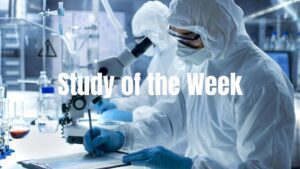Welcome to Study of the Week from Patient Worthy. In this segment, we select a study we posted about from the previous week that we think is of particular interest or importance and go more in-depth. In this story we will talk about the details of the study and explain why it’s important, who will be impacted, and more.
If you read our short form research stories and find yourself wanting to learn more, you’ve come to the right place.
This week’s study is…
Harnessing whole human liver ex situ normothermic perfusion for preclinical AAV vector evaluation
We previously published about this research in a story titled “Researchers Begin Testing Gene Therapies in Whole Human Liver” which can be found here. The study was originally published in the research journal Nature Communications. You can read the full text of the study here.
This research was affiliated with the Children’s Medical Research Institute.
What Happened?
In recent years, the promise of gene therapy, which typically involves treatments that either edit a targeted gene or replace a mutated gene with a non-mutated copy in order to treat a genetic disease, has begun to bear fruit. While these treatments are costly, more and more have begun to see approval for genetic disorders, and the result has been substantially improved outcomes. It’s clear that gene therapy is a viable path forward for addressing a significant number of genetic conditions and implementing more personalized therapeutic approaches.
But the development of gene therapies is still a complex and arduous task. Implementing model systems that are capable of predicting the clinical effects of a gene therapy will be critical for streamlining the process, which typically relies on a mechanism involving adeno-associated viral (AAV) vectors. The goal of this study was to use a whole human liver as a test bed for AAV. This ability was only available recently following the development of new techniques that allow scientists to keep a human liver ‘alive’ outside of the body.
This ‘living’ organ, which is maintained at human body temperature, is called a normothermic liver perfusion system. The benefit of using an entire organ—particularly a vital and relatively complex organ like the liver—is that scientists can now evaluate the effect of a gene therapy specifically on that organ, something that was not previously possible.
Why Does it Matter?
At first, it may not seem like a major breakthrough to be able to test gene therapies on an entire organ, but this approach could allow for much more efficient development of future gene therapies:
“This is important because the current generation of viral vectors we use to deliver gene therapeutics to the liver are not good enough for the majority of clinical applications. At the moment we often have to use these therapies in high doses to overcome their functional inefficiencies and achieve clinical benefit. Up to now the gene therapy delivery tools have been tested in animal models, which while invaluable to evaluate safety and targeting of other organs/tissues, do not adequately replicate the functionality of these delivery methods in the patient.” – Leszek Lisowski, Associate Professor, Senior Author
This innovation also allows for reduced usage of animal models, which are not as accurate. Researchers will also be able to estimate doses more accurately and identify potential adverse effects. The team also envisions the possibility of the development of more specialized, purpose-built viral vectors using this approach.
“Together, this work broadens the repertoire of preclinical models available for conducting liver-directed vector studies and allows us to minimize the use of animals. Ideally this will bring us closer to more efficient gene therapies for diseases that currently have limited, if any, treatments.” – Lisowski



